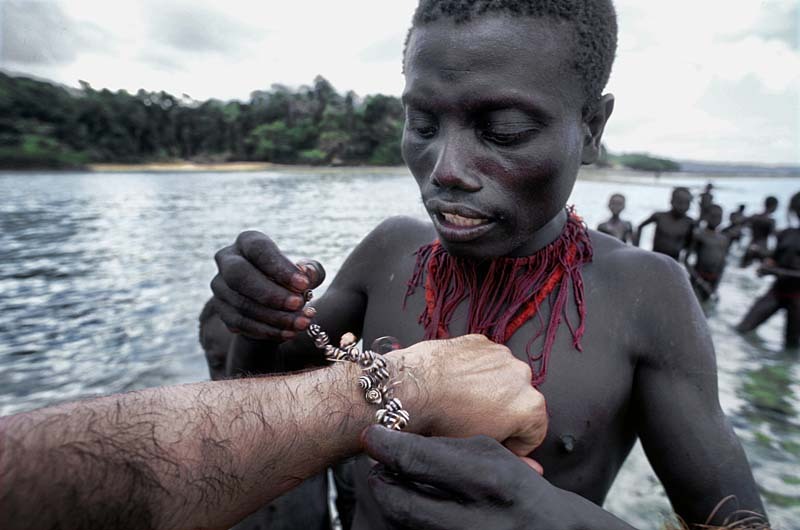I recently watched a documentary about Andamanese people on YouTube.
The Andaman archipelago is officially ruled by India and lies in the Bay of Bengal, between the eastern coast of India and Burma.
The indigenous people are or were stone age people, hunter-gatherers.
They have the general appearance and stature of African pygmy people.
There are 4 main surviving groups: Great Andaman (made up of several tribes, although the remaining people are few in number and have discarded tribal boundaries), Jarawa, Onge, and Sentinelese.
I've read a bit about their languages (only on Wikipedia - tsk! tsk!) and find them also interesting.
Apparently, their languages are agglutinative - meaning that prefixes and suffixes are added to basic words to convey elaborate meaning. There are prefixes relating to body parts that give different shades of meaning - e.g. 'sharp-sighted' or 'keen eyed' is conveyed by adding the prefix for eye to the adjective good.
Many of the Great Andaman dialects have the prefix for tongue ('aka') before the tribal name, e.g. aka-jeru, aka-bo (language of the Jeru people, language of the Bo people, etc.).
The history of the Great Andaman people is a sad one. Successive empires of Britain and Japan, plus the independent Indian government haven't treated them well, and their numbers are much reduced, their languages have mostly disappeared.
The Jarawa are faring better, they still speak their language but a road built by the Indian government dissects their traditional land in two. Plus, they are greatly outnumbered on South Andaman by new immigrants from India.
The Sentinelese are found on North Sentinel Island and are extremely hostile to outsiders. They probably see how outsiders have negatively impacted on other Andaman peoples and as a consequence, they reject the outside world and want to live as they have done for millennia. I totally understand this, and admire them for it, in a way.
Their language and customs are largely unknown. The Indian government has given up on trying to contact them and has designated the island an excluded zone.



